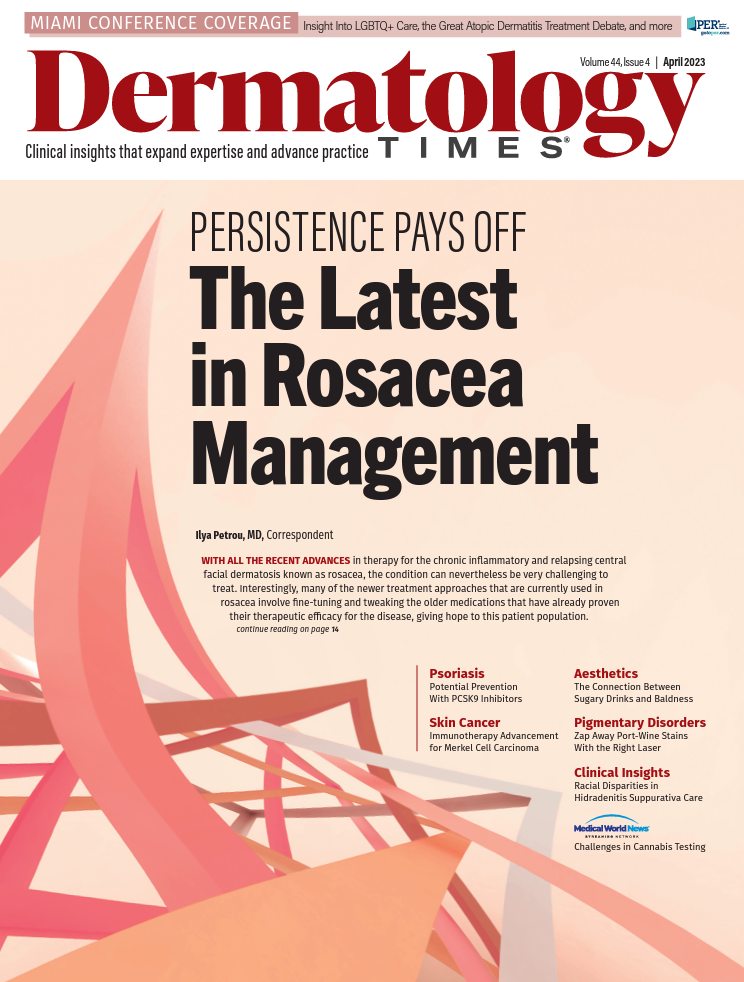- Case-Based Roundtable
- General Dermatology
- Eczema
- Chronic Hand Eczema
- Alopecia
- Aesthetics
- Vitiligo
- COVID-19
- Actinic Keratosis
- Precision Medicine and Biologics
- Rare Disease
- Wound Care
- Rosacea
- Psoriasis
- Psoriatic Arthritis
- Atopic Dermatitis
- Melasma
- NP and PA
- Skin Cancer
- Hidradenitis Suppurativa
- Drug Watch
- Pigmentary Disorders
- Acne
- Pediatric Dermatology
- Practice Management
- Prurigo Nodularis
- Buy-and-Bill
Publication
Article
Dermatology Times
New Innovations in Genomics
Author(s):
Aaron Farberg, MD, FAAD, discussed updates and applications of genomics in dermatology at South Beach Symposium.
During the “Applications of Genomics and How it Impacts Patient Care” topic symposium, Aaron Farberg, MD, FAAD, double-board certified dermatologist, Mohs surgeon, and chief medical officer of Bare Dermatology in Dallas, Texas, presented the latest innovations in genomics at his session, “New Innovations Across the Spectrum” at South Beach Symposium 2023.1
Farberg began his presentation by discussing the key difference between genomics and genetics. Genetics is the study of heredity, but genomics is the study of specific genes and their functions. According to Farberg, “Genetics scrutinizes the functioning and composition of the single gene, whereas genomics addresses all genes and their interrelationships in order to identify their combined influence on the growth and development of the organism.”
It’s important to know that genomics and genetics have distinct differences because 300,000 pigmented lesions cannot be confidently diagnosed with routine histopathology. To better manage melanoma diagnoses, Farberg noted that dermatologists can ask for ancillary testing and that it is not overstepping the dermatopathologist, but instead improving the discussion between dermatologist and dermatopathologist.
Farberg provided an overview of when dermatologists should consider ancillary testing:
Uncertain diagnoses
- Atypical intraepidermal melanocytic proliferation (AIMP)
- Moderate or severe dysplastic nevus
- Cannot exclude melanoma in-situ
Conflicting clinical or histopathological features
- Benign nevus with recommended excision
- Highly concerning clinical history
Uncertain malignant potential
- Melanocytic tumors of uncertain malignant potential (MELTUMP)
- Atypical Spitz tumor
Treatment recommendation
- Surgical management in cosmetically sensitive areas
Regarding what is new in melanoma management, Castle Biosciences has two melanoma detection tests, the 23-GEP and 35-GEP tests. The 23-GEP test quantifies the expression of 23 genes for primary melanocytic lesion biopsy using RT-PCR and includes PRAME. The 35-GEP test quantifies the expression of 35 genes from primary melanocytic lesion biopsy using RT-PCR and applies a validated neural network algorithm. According to Farberg, Castle Biosciences will run both tests in tandem, and the 35-GEP test tends to be more specific.
For high-risk cutaneous squamous cell carcinoma (cSCC), Farberg recommends dermatologists choose the 40-GEP test for the best gene data. 40-GEP clinical studies2 have shown that “integrating novel molecular prognostication with traditional clinicopathological risk factors can improve stratification of high-risk cSCC patients and may inform selection of risk-appropriate treatment and surveillance strategies.”
References
- Farberg A. New innovations across the spectrum. Presented at the 2023 South Beach Symposium Meeting; February 9-12, 2023; Miami Beach, FL.
- Au JH, Hooper PB, Fitzgerald AL, Somani AK. Clinical Utility of the 40-Gene Expression Profile (40-GEP) Test for Improved Patient Management Decisions and Disease-Related Outcomes when Combined with Current Clinicopathological Risk Factors for Cutaneous Squamous Cell Carcinoma (cSCC): Case Series. Dermatol Ther (Heidelb). 2022;12(2):591-597. doi:10.1007/s13555-021-00665-y







